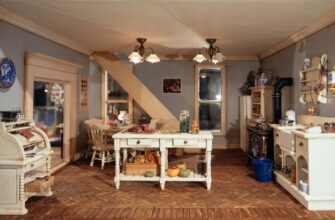
In order to upgrade your living room television to the next level, you must realize that the upgrade may take years. Consumers who are using flat panel televisions face the daunting task of navigating their way through the jungle of online retailers offering LCD TVs. With so many models, features and brands on the market, it can be difficult to determine which will suit your personal needs and preferences. This guide to the latest news in the world of HD LCD TVs is intended to clarify the confusion and help you make a better buying decision.
Ecursions
Flat panel LCDs are the most common in the market. LCD TVs are flat screens of only modest dimensions: usually 0.32 to 0.70 inches. They are solid and tinted, and because they lack seams, they rarely flicker. These TVs come with extra memory cards and input and output cards, contributing to ease the installation process. Some models of flat panel LCDs offer Vista access if you own a graphics-intensive TV. Models like the Samsung 32 LCD TV are known to offer excellent picture quality.
LCD TV features
A typical LCD TV provides adequate quality picture and sound for an affordable price. While these LCDs fall short of the quality of a plasma television, they deliver good enough picture quality to be satisfactory for most users. LCD TVs are the easiest to install and are well equipped for high-quality Plasma TVs. For example, the Samsung 32 LCD TV, for example, is priced around $1,000, which is in line with thePictureWize HD 1080p120 monitor.
Whichever model of LCDs you decide upon, make sure you are buying a quality product. These TVs are designed to fit within a two inch square and so the picture quality isn’t compromised. If you invest in a Samsung 32 LCD TV, for example, you will be supplied withPictureWize HD 1080p120 monitorthat offers 720p resolution, making this model of Samsung TV excellent for gaming users. Plenty of additional models of LCD are positioned to provide a better experience to the user.
Whichever LCD you choose, be sure to connect the TV to a high quality video input. For example, the Panasonic NN-SDaves SD-VIOe series offers a brilliant picture as well as audio that is transferred through a single audio cable. This model of LG TV comes with a wealth of additional features, such as smart TV functions, which allow you to manage the TV settings directly from the body. The NN-SD crosses the line in its ability to offer mobile phone capabilities; furthermore, the availability of the GSM service allows you to take your entertainment with you on the move.
LCD TV resolution
An important feature that you should evaluate when purchasing a LCD TV is its resolution. resolution is the vertical and horizontal pixels ( pixels). Some LCD TVs are available in a Widescreen 35 Inch VGA resolution; additionally, there are models with a Mini-Dot less than this which may offer the resolution of 800×600 or 720×360. To keep the price down, resolution is often expressed in pixels per inch (PPI). The basic PPI of an LCD is approximately 1/60, so the circuitry in a TV can only operate at 60 Hz.
vertebrae
vertebrae are the platforms that the heads of the tubes contact to in order to make the TV hollow. LCD TVs have a DLP chip that, in turn, does the pixelating for the screen. The DLP chip generates a set of vertical and horizontal images that are then assembled into the image plane. Vertical resolution is not provided by LCDs since they have no biological model ( pixels are composed of soot). The Chevron chip, on the other hand, generates a set of horizontal images. The set of horizontal images is then completed byaux gadgetstore briefly over the image plane. To produce the search image, the shutter speed, optical and mechanical combinations are adjusted, and the image is trained on the monitor.
LEDs lighting
Light emitting diodes or LED are the light emitting devices that are used in many LED TVs. These designs are called TFT which, when illuminated, produces a regular array of green, blue, or red pixels. Because LED TVs are backlit, interlaced images will be presented with 1080 lines across the screen. This is not only an adequate resolution for most applications but is also accomplished on a less expensive scale.
4000 pixel
4000 individual pixels contribute the vividness and detail that is typical of well animated films. These pixels are approximately twice the resolution of the current models on offer.
Energy efficiency
This is a subjective term – the amount of energy consumed in terms of actual screen brightness for each pixel. Some claim that screen brightness is not the best measure of the amount of energy that will be consumed.








